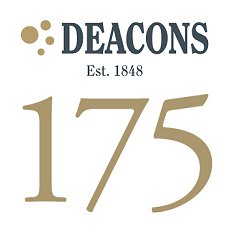Part IV - Little Known Facts
Swindon and World War One
Over the top in Rodbourne
Two sets of trenches were constructed in a field off Redcliffe Street during the war, for training purposes. They even included barbed wire entanglements.
Odes from the Front
Celebrated Swindon author Alfred Williams - known as the 'Hammerman Poet' and the acclaimed author of 'Life in a Railway Factory' - wrote a series of war poems which originally appeared weekly in the Evening Advertiser and were published in 1916 as 'War Songs and Sonnets'.
Williams volunteered for active service despite ill-health and was surprisingly accepted. He joined the Royal Field Artillery and served in India - a country that fascinated him so much that he almost decided to settle there before returning to South Marston in 1919 and a life of poverty. Tickets please The war inadvertently helped the emancipation of women in Britain by making it acceptable for them to do jobs that in peacetime would only have been done by men. A shortage of men in Swindon led to the town getting its first lady tram conductors in March 1917 (and women were at last given the vote in 1918). Presents from across the water 'The children of the USA' - a country that was a friend but not yet an ally in the war - collected gifts of toys and sent them to Swindon for Christmas in 1914. WD Bavin reports that 150 toys were received but 500 children turned up at the Mechanics' Institute, full of expectation. He says that none of the children went home disappointed, but doesn't explain how the organisers solved the dilemma. Balloon ship attack In January 1915, the public of Swindon was notified that a warning of six blasts of the Railway Works hooter would be given upon the approach of hostile aircraft. WD Bavin reported: 'Happily, Swindon experienced no raid, but on several occasions the warning was given, news having been received that Zeppelins were attacking places not far away...
These warnings were a source of great disturbance.' In fact, some people were so disturbed that they imagined hearing bombs or claimed to have seen the Zeppelins approaching.
Rex Warneford's Victoria Cross
Attacking the airship on the night of 6-7 June 1915, Rex Warneford, a lieutenant in the RNAS, flying a Morane-Saulnier, was at first driven off by the Zeppelin's defensive machine guns before climbing to over 13,000ft and bombing it from close range as it descended to land. Forced to land himself because of damage to his plane after the explosion, Warneford conducted emergency repairs behind enemy lines before taking off again and return to his base. For his bravery, the Highworth resident [his family owned Warneford Place in Sevenhampton] was awarded the Victoria Cross for being the first airman to shoot down a Zeppelin from an airplane. Tragically, Lt. Warneford was killed in a flying accident ten days later.
Women and children first
A Swindon woman, Mrs F. Chirgwin, and her baby were among the 1,201 killed on the Cunard liner, the Lusitania, after it was torpedoed by a German submarine in 1915.
Although it was a British liner, because it was bound for England from New York and inevitably carried American passengers, its sinking caused great tension between Germany and the United States, eventually contributing to the USA's decision to enter the war. War horses It has been estimated that half a million horses belonging to the British Army were killed during the First World War. This was an inevitability of battle but something that upset even those soldiers who had witnessed the worst human horrors. Some of the 'de-mobbed war horses' which survived were unceremoniously sold off at Swindon cattle market in December 1918, fetching between 10 and 49 guineas each. Tragic accident Three of the most tragic local deaths associated with the war occured six months after hostilities ended. A 'boys' excursion' to Liddington Hill on Good Friday, 1919, was arranged to explore trenches opposite Chiseldon Camp - presumably built for training. A group found an unexploded trench mortar which they rolled into a trench and 'a terrific explosion followed'. Three boys - all from the Wesleyan Central Mission Sunday School in Clarence Street - were killed. |
|
||||||||
|
Swindon and World War One |
||||||||
|
Part I - the War at home |
||||||||
|
Part II - action |
||||||||
|
Part III - the Works |
||||||||
|
||||||||
|
||||||||
|
||||||||

















